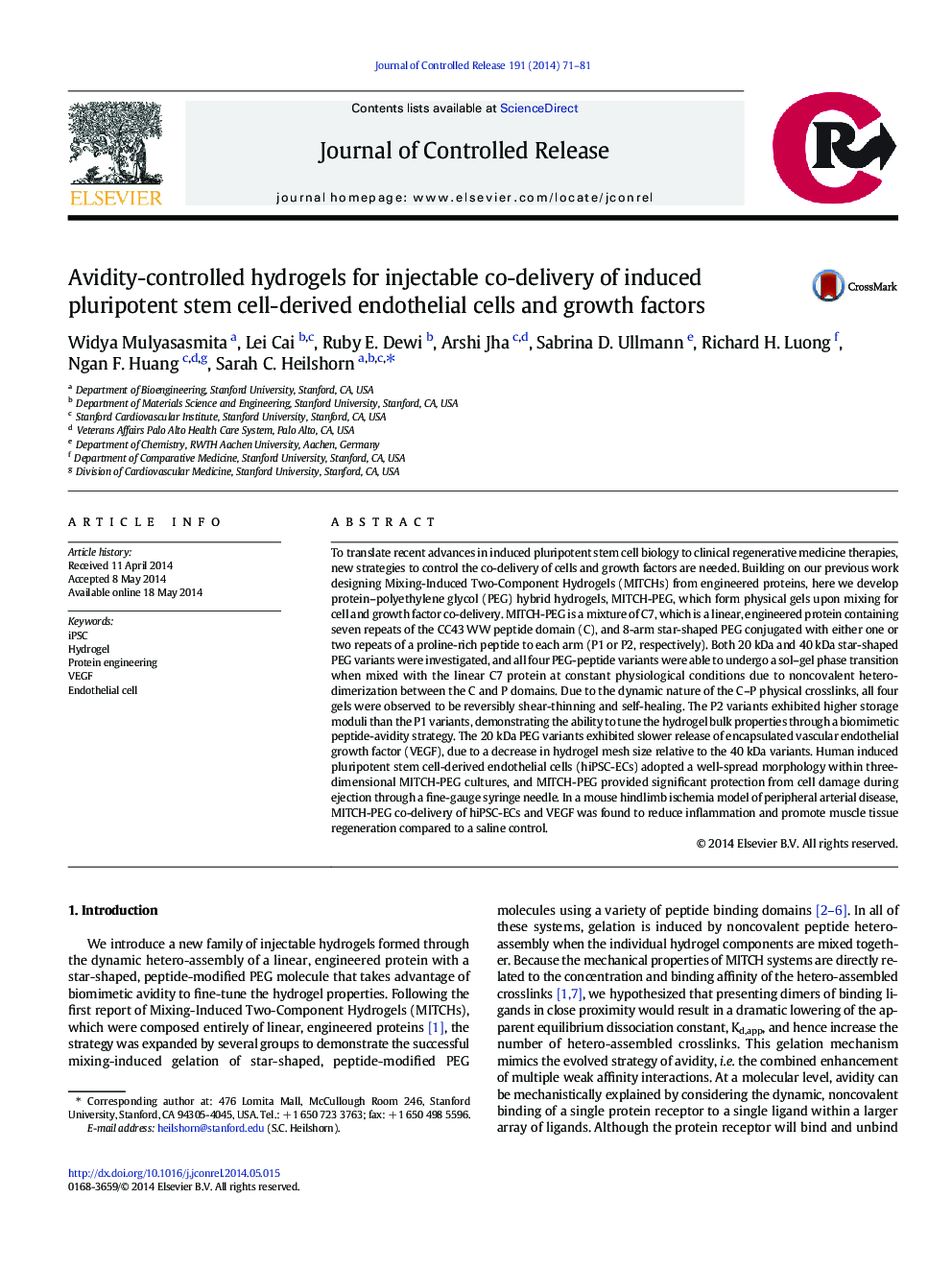| کد مقاله | کد نشریه | سال انتشار | مقاله انگلیسی | نسخه تمام متن |
|---|---|---|---|---|
| 1423865 | 1509058 | 2014 | 11 صفحه PDF | دانلود رایگان |
To translate recent advances in induced pluripotent stem cell biology to clinical regenerative medicine therapies, new strategies to control the co-delivery of cells and growth factors are needed. Building on our previous work designing Mixing-Induced Two-Component Hydrogels (MITCHs) from engineered proteins, here we develop protein–polyethylene glycol (PEG) hybrid hydrogels, MITCH-PEG, which form physical gels upon mixing for cell and growth factor co-delivery. MITCH-PEG is a mixture of C7, which is a linear, engineered protein containing seven repeats of the CC43 WW peptide domain (C), and 8-arm star-shaped PEG conjugated with either one or two repeats of a proline-rich peptide to each arm (P1 or P2, respectively). Both 20 kDa and 40 kDa star-shaped PEG variants were investigated, and all four PEG-peptide variants were able to undergo a sol–gel phase transition when mixed with the linear C7 protein at constant physiological conditions due to noncovalent hetero-dimerization between the C and P domains. Due to the dynamic nature of the C–P physical crosslinks, all four gels were observed to be reversibly shear-thinning and self-healing. The P2 variants exhibited higher storage moduli than the P1 variants, demonstrating the ability to tune the hydrogel bulk properties through a biomimetic peptide-avidity strategy. The 20 kDa PEG variants exhibited slower release of encapsulated vascular endothelial growth factor (VEGF), due to a decrease in hydrogel mesh size relative to the 40 kDa variants. Human induced pluripotent stem cell-derived endothelial cells (hiPSC-ECs) adopted a well-spread morphology within three-dimensional MITCH-PEG cultures, and MITCH-PEG provided significant protection from cell damage during ejection through a fine-gauge syringe needle. In a mouse hindlimb ischemia model of peripheral arterial disease, MITCH-PEG co-delivery of hiPSC-ECs and VEGF was found to reduce inflammation and promote muscle tissue regeneration compared to a saline control.
A biomimetic avidity strategy was used to design a family of Mixing-Induced Two-Component Hydrogels for the injectable co-delivery of growth factors and human induced pluripotent stem cell-derived endothelial cells.Figure optionsDownload high-quality image (93 K)Download as PowerPoint slide
Journal: Journal of Controlled Release - Volume 191, 10 October 2014, Pages 71–81
